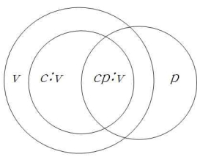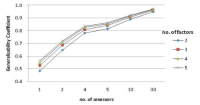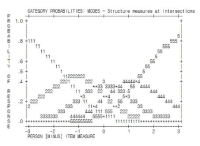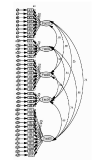Purpose The purpose of this study is to deeply understand what high school student athletes are doing as athletes and how they are transformed into student athletes from studying and exercising simultaneously. Through this, to understand the life of student wrestlers and to provide basic data for rational improvement of school athletic department. Methods Participants of the study selected one student in the second grade and two students in the third grade at Woosu high school in metropolitan. Data was collected through in-depth interviews, participant observation, and document analysis. The collected data was analyzed using Domain Analysis and Taxonomic Analysis by Spradley(1979). To assure the credibility of the data, additional checks and analysis were conducted with the participants, and the research process was examined by experts. Moreover, the common contents of the data were included in the research results with multilateral verification. Results Woosu high school wrestling student athletes were recognized as athletes as a training life to lose their dreams, a school life to stop their work. However, since student athletes have been studying and exercising together, they have been transformed from a trainee to a motivated active, a student who is reborn in the school community, and transformed a reflective student athlete to an immature player on a daily life. Conclusion The policy of the school athletic department to study and exercise together has a positive effect on student athletes and has a good effect. The introduction and practice of this system can expect true student athletes and establish elite physical education right away.
The frailty, characterized by reduced physiological function is closely related to a fall, disability, institutionalization, hospitalization, and mortality in the elderly. A reduced physical fitness is a major phenotype of the frailty. The purpose of this study was to investigate the relationship among pre-frailty, physical activity (PA) and functional fitness in the community dwelling elderly women. The study participants were elderly women (n=338, 70.6±4.2years) aged over 65 who took part in the Korean Healthy Fitness Criteria study for the National Fitness Award Project in 2015. The pre-frailty was defined using the Cardiovascular Health Study frailty criteria. PA was assessed using the International PA Questionnaire (IPAQ). The participants were classified as regular PA participants if they meet the World Health Organization (WHO) PA recommendation for the elderly. Functional fitness was assessed using the composite of the National Fitness Award fitness testing for the elderly. Quality of life was evaluated using EuroQoL visual analogue scale and WHO quality of life assessment. As the results, the pre-frail elderly women were significantly older and obese (body mass index, percent body fat, waist circumference) than the healthy elderly. The pre-frail elderly presented significant decreases in walking, moderate intensity, and total PA compared to the healthy elderly even after adjusted for age and percent body fat. However, no significant difference was found in vigorous-intensity activity between the pre-frail and healthy elderly. Also, the pre-frail elderly women showed the decrease in functional fitness and quality of life compared to the healthy elderly. Regular PA was associated with high levels of muscular endurance and coordination in healthy and pre-frail elderly. In pre-frail elderly, high levels of cardiorespiratory endurance was associated with PA. In conclusion, regular PA is inversely associated with fitness decline in healthy and pre-frail community-dwelling elderly women. Regular PA might attenuate fitness decline in pre-frail elderly women.

The purpose of this study which is follow up study of Lee and Kim(2015b)'s was to analyse error sources and estimation of reliability in peer review of forced connection method-sportscasting by applying generalizability theory. Generalizability theory quantify error sources of the data measured under certain specific situation set by the researchers. It is an analysis method that the relative influences of each error sources taking from score is determined(G-study), and the effective measurement condition future applicable is provided(D-study). Participants were 10th high school students(N=216). Data were collected from student's peer review results and analyzed using univariate and multivariate generalizability theory. Results showed that error source for video have a more significant impact than other error sources. But the result by analyzing the gender difference was that error source for the interaction of video and participants have a more significant impact than other error source in the case of girls. Peer review used in this study showed high generalizability coefficient and even when reducing the number of video or participants it can maintain the adequate reliability. But generalizability coefficient of boys was higher than girls and specific measurement conditions leading to enhanced reliability were different when analyzing by gender difference. Also, method of analysis which cannot reflect measurement conditions properly estimates the reliability excessive. Discussions were provided in term of the relative influences of each error sources, the effective measurement condition maintaining the Generalizability coefficient of a certain level, and the comparison the Generalizability coefficient with the way of estimation traditional reliability applying univariate and multivariate Generalizability theory taking from score in peer review of forced connection method-sportscasting.





The purpose of present study is to develop the'Golf Mental Scale'that measures and assesses golf players' cognitive, emotional, behavioral response per golf mental factor experienced while competing in depth. In order to achieve this research purpose, Researcher collected raw data of golf mental question through literature review and interview with 8 members of Korean male national golf team and gathered questions per factor through Deductive-Inductive Content Analysis for the raw data. Then, Researcher conducted first and second questionnaire survey targeting 253 of elite & pro golf players and conducted Rasch Model and Confirmatory Factor Analysis for the data collected using SPSS 21.0, Winsteps Ver. 3.65 Program, AMOS 18. The conclusion reasoned out through these research process was as follows: First, golf players' psychological factor structure identified was revealed as Concentration, Self-confidence, Anxiety and Arousal control, Emotion control, Thought control. Total 37 questions were determined. Second, 5 point scale was revealed to be a good fit for Golf Mental Scale. Third, the result of Construct Validity Verification of CFA showed that Golf Mental Scale model was a good fit. Fourth, Reliability of Golf Mental Scale showed high level by recording Cronbach' α value .936. Fifth, Internal Consistency of Convergent Validity and Discriminant Validity was revealed to be satisfied. Eventually, Golf Mental Scale is expected to be used practically as a functional test tool that provides participant's response toward each situation-specific questions concretely and an objective evaluation of participant's golf mental ability per factor considering questions'level of difficulty and participants'characteristic.



PURPOSE This study examined the effects of focus of attention on beginning golfers’ competitive anxiety and motor performance. METHODS Forty-eight college students with no prior golf putting experience were selected as participants and randomly assigned to internal-focus, external-focus, holistic-focus, and control groups (12 participants each). All subjects performed 5-m golf putting in acquisition, noncompetitive, and competitive situations. RESULTS In competitive situations, the internal-focus, holistic-focus, and control groups showed golf putting accuracy and consistency similar to those in noncompetitive situations, whereas the external-focus group’s golf putting accuracy and consistency were significantly lower in competitive situations than in noncompetitive situations. In addition, the holistic-focus group showed significantly higher golf putting accuracy than the control group in both competitive and noncompetitive situations. CONCLUSIONS Holistic-focus can be used effectively as a strategy for beginners to learn motor skills and reproduce learned motor skills when state anxiety increases. However, external attention focus cannot be considered a strategy to induce effective beginners’ exercise performance when competitive state anxiety increases.
PURPOSE This study aimed to develop a Korean version of the Low Energy Availability in Females Questionnaire (LEAF-Q) by translating the original English version into Korean using cross-cultural translation guidelines and conducting a face validity assessment. METHODS Following structured cross-cultural translation guidelines, a provisional final version (Pre-K-LEAF-Q) was created through initial translation, synthesis of initial translations, back translation, synthesis of back translations, and expert committee review. Additionally, its face validity was tested with 30 female participants. RESULTS After completing the translation process, the expert committee comprehensively compared each translation to finalize the Pre-K-LEAF-Q. This version was crafted to ensure semantic, idiomatic, experiential, and conceptual equivalence. Among the 30 females who participated, three noted that certain phrases were unclear or awkwardly expressed. The expert committee reviewed these five comments from the face validity test and modified three of the phrases. CONCLUSIONS The K-LEAF-Q was developed through cross-cultural translation and face validity testing to suit the cultural and linguistic context of Korea. It is expected to be a valuable tool for Korean female athletes.
PURPOSE The purpose of this study is to explore the effects of the student-athlete and student peer mentoring program as a collegiate class. METHODS The peer mentoring program, conducted at A University in the first semester of the 2023 school year, was evaluated using practical action research (Zuber-Skeritt, 1996). RESULTS In the introduction stage, ‘relative and absolute evaluation’, ‘member ratio’, and ‘definition of professor role’ were categorized as challenge issues. In the progress stage, ‘de-formalized lecture method’, ‘student athlete’s coaching experience’, and ‘student’s experience of football culture’ were discovered as possibilities, while ‘vacancy and absence of mentor-mentee’, ‘limited group activities and limitations of team sports’, and ‘lack of objective evaluation’ required improvement. At the end stage, student-athletes experienced changes in values such as self-identity, football, and human relationships, as well as quantitative and qualitative changes in sports participation. CONCLUSIONS This study confirmed the potential of the peer mentoring program as a collegiate class as well as its practical significance for guaranteeing student-athletes' learning rights and for forming sports culture on collegiate campuses.
PURPOSE This study aimed to verify the relationship between adolescent athletes’ julsil, competitive trait anxiety, and self-management. METHODS A total of 370 adolescent athletes who were registered with the Korean Sport & Olympic Committee participated in the survey; 24 insincere responses were excluded from the analysis, leaving a total of 346 participants. After verifying the construct validity of the measurement tool used in the survey, statistical and correlation analyses were performed. The research model was subsequently verified using structural equation modeling. RESULTS Adolescent athletes’ julsil had a significant positive effect on self-management but not on competitive trait anxiety. In addition, self-management was found to have a significant negative effect on competitive trait anxiety, and also completely mediated the relationship between julsil and competitive trait anxiety. CONCLUSIONS Adolescent athletes’ julsil does not increase competitive trait anxiety, but rather plays a role in reducing it by increasing self-management. These findings unveil mechanisms through which julsil can be used to enhance athlete performance.
PURPOSE This study sought to investigate the effects of passive warm-up on flexibility, exercise performance, and lactate oxidation rate in track and field athletes. METHODS A total of eight male athletes with more than three years of athlete experience were recruited as participants, and passive warm-up (PW) and active warm-up (AW) treatments were conducted in a single-group crossover study design. The participants performed thermal stimulation at 40°C for 20 minutes as a PW and performed a 60-70% HRmax cycle as an AW. Flexibility and exercise performance were measured after each treatment. Anaerobic power was measured using the Wingate test, and lactic acid concentration was measured. RESULTS Body temperature significantly increased in both PW and AW, and no significant difference was observed in exercise performance between treatments. Flexibility and lactic acid oxidation rate were significantly higher in PW than in AW. CONCLUSIONS In track and field sprinters, PW did not exhibit any significant difference in anaerobic power and exercise performance compared to AW even though no physical exercise was performed, and PW was effective in body temperature, lactic acid oxidation rate, and flexibility. PW suggests the possibility of replacing AW.
PURPOSE By comparing and analyzing the sport safety policies in New Zealand, the USA, and the UK, this study sought to propose sport safety policies for people with disabilities in Korea. METHODS This study utilized a comparative research design in three steps. Policy documents were collected from the websites of institutions that directly or indirectly influence the sports safety policies for people with disabilities in each country, as well as academic articles from both domestic and international research databases. RESULTS The data analysis revealed each country’s legal basis, operating entities, and delivery systems. CONCLUSIONS Based on the results, the following implications for the development of sports safety policies for people with disabilities are presented. First, the current legislation system that serves as a foundation for the sports safety policy should be strengthened. Second, a cooperative system should be established among various operating entities related to sports for people with disabilities. Third, the delivery system of sports safety policies for people with disabilities needs to be diversified. To sustain the growing participation of such individuals in sports, developing sports safety policies and guidelines specific to people with disabilities at the national level is essential.